Commercial photography officially began in Australia on 12 December, 1842, when George Baron Goodman opened his ‘Daguerreotype Gallery’ on the rooftop of Sydney’s then tallest building, The Royal Hotel at 49 Hunter Street.
The Englishman is said to have taken lessons in Paris from Louis Daguerre, the inventor of the Dagerreotype process, and on his return to London, Goodman purchased a licence from Richard Beard, holder of the English patent for the process, granting him sole rights to take photographs within specific British colonies, including Australia.
News of Daguerre’s invention had been circulating in the colony’s newspapers since January 1840 and people were keen to see the latest technological development from Europe, on the other side of the planet.
Goodman’s arrival in Sydney in November 1842, aboard the ship Eden with all the necessary equipment for capturing daguerreotypes, made the news. The Australian newspaper (not the Murdoch owned tabloid) reported on Wed 16 November 1842:
DAGUEROTYPE PORTRAITS. — Mr. Goodman has landed his apparatus, and will very soon commence operations in Sydney. We understand the flat roof of the Royal Hotel has been chosen as a proper place for taking these likenesses.
As we’ve seen with Daguerre and the other early photographers, there was a great deal of showmanship on the part of the photographer. What is now a simple act of having a portrait done was a serious event in the 1840s. Sitters put on their finest clothes and sat in regal position for their portraits.
OPEN ON MONDAY NEXT.
BY HER MAJESTY’S ROYAL LETTERS PATENT.
PHOTOGRAPHIC PORTRAITS,
Taken by the Reflection of Light.THE Proprietor of the Reflecting Apparatus, by which FAITHFUL MINATURE LIKENESSES of the human countenance and person are “won from the hand of nature” in the short space of a few seconds, respectfully announces to the inhabitants of Sydney, that
THIS EXTRAORDINARY PROCESS WILL BE OPEN TO THE PUBLIC, AT THE ROYAL HOTEL,
in which the Photographic Apparatus, the discovery of which is ranked among the greatest scientific achievements of the present age, will be in DAILY OPERATION FROM TEN TILL FIVE. The Price of each Portrait is ONE GUINEA, exclusive of the Frame.The invention was recently introduced into England, at the Royal Polytechnic Institution, London; and the following are a few extracts from the leading journals relating to its merits :
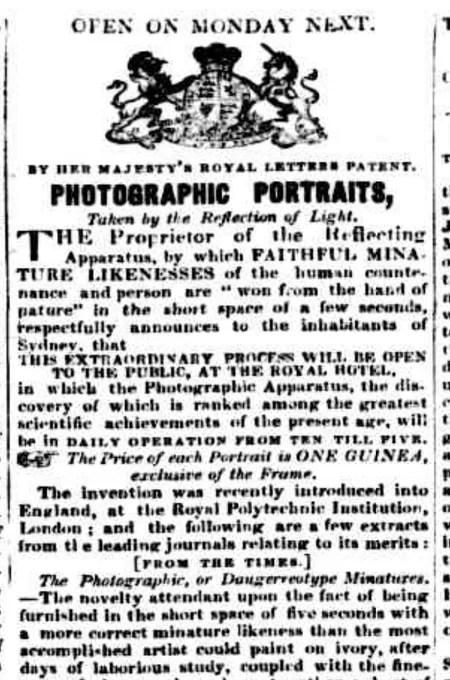

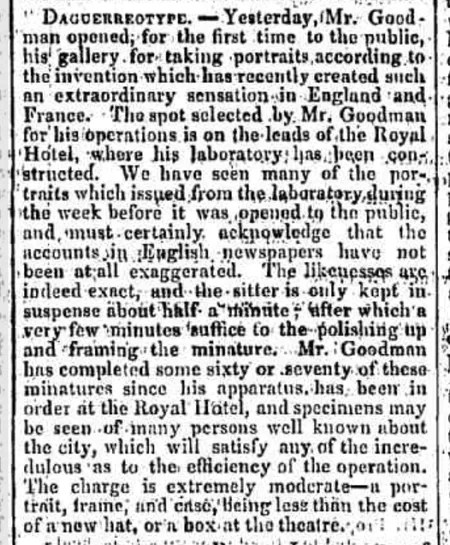

Goodman’s ‘Daguerreotype Gallery‘ in Sydney
Goodman’s photography studio was an instant success, with some 60 or 70 sitters on the first day, including “many persons well known about the city”. On 13 December 1842, the day after the studio opened, the Sydney Morning Herald reported on the City Council Meeting, which included:
DAGUERREOTYPE.—Yesterday, Mr. Goodman opened, for the first time to the public, his gallery for taking portraits according to the invention which has recently created such an extraordinary sensation in England and France. The spot selected by Mr Goodman for his operations is on the leads of the Royal Hotel, where his laboratory has been constructed. We have seen many of the portraits which issued from the laboratory during the week before it was opened to the public, and must certainly acknowledge that the accounts in English newspapers have not been at all exaggerated. The likenesses are indeed exact, and the sitter is only kept in suspense about half a minute ; after which a very few minutes suffice to the polishing up and framing the miniature. Mr. Goodman has completed some sixty or seventy of these minatures since his apparatus has been in order at the Royal Hotel, and specimens may be seen of many persons well known about the city, which will satisfy any of the incredulous as to the efficiency of the operation. The charge is extremely moderate—a portrait, frame, and case, being less than the cost of a new hat, or a box at the theatre.
Photographic portraits were made using the daguerreotype process on the rooftop of Sydney’s tallest building, The Royal Hotel, to make use of the natural sun light.
Exposure times were around 30 seconds and images were processed and framed for the sitter in a few minutes. Burning magnesium for flash photography was not invented until 1862, so the sitter had to be very still during the exposure to capture a sharp image.
Goodman’s portrait studio was encased in blue glass, a feature which helped speed up exposure times due to the process’s sensitivity to blue wavelengths of the light spectrum.
On 21 January 1843, Governor Sir George Gipps and his wife Elizabeth, paid a visit to Goodman’s rooftop studio, where they sat for their portraits made by the pioneering photographer. Sadly, these historic daguerreotype portraits have disappeared.
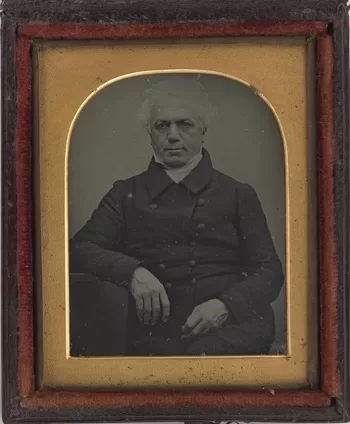

Within two months, Goodman had made the necessary arrangements to photograph full-length portraits, group photographs, and picturesque landscapes, thus expanding the scope of his photographic endeavours.
A Guinea each
The novel portrait device attracted a lot of attention in the colonies, even though people knew little about the scientific process. Goodman charged one guinea each for a portrait, adding an extra guinea for each additional person included in the image.
The daguerreotype portraits were promptly processed and framed for the sitters within a matter of minutes, at extra cost.
“The charge is extremely moderate—a portrait, frame, and case, being less than the cost of a new hat, or a box at the theatre” proclaimed the Sydney Morning Herald’s account of the opening of Mr. Goodman’s ‘Daguerreotype Gallery’ in December 1842.
A Guinea coin contained approximately one-quarter of an ounce of gold, officially worth twenty-one shillings, or one pound and one shilling. The annual wages of colonists were such that in 1850 “Farm servants who understand their business, £24 to £26 per annum”. Goodman’s portraits cost about two weeks wages.
Sydney’s population was about 35,000 people at the time, and the colony was suffering an economic depression. Even so, the colonists were eager to part with their guinea and become part of the latest in technology from Europe. Goodman took advantage of his monopoly photographing Sydney’s rich, powerful and notable.
Photography travels to Tasmania
After nine months in Sydney, Goodman sailed for Hobart in August 1843 where he photographed the populace until returning to Sydney in March 1844. While in Hobart, apart from capturing numerous portraits, he is documented as having photographed various perspectives of the city. Regrettably, none of these cityscapes have endured the test of time.
George Barron Goodman, Australia’s first professional photographer, opened a studio in Hobart in 1843 and produced tiny daguerreotypes.
On 6 October, 1843, Goodman wrote a letter to the editor of the Hobart Courier, published as DAGUERREOTYPE complaining about Thomas Bock using his daguerreotype – possibly purchased from Captain Augustin Lucas, “an impecunious Frenchman” who made the first ever photograph in Australia two years earlier. Goodman had paid Beard in London for a monopoly in the colonies and was not happy.
DAGUERREOTYPE.
To the Editor.Sir, — Perceiving by the Hobart Town Advertiser an advertisement headed “Mr. Bock,” in which that gentleman professes to invite the public to inspect an apparatus which he calls a “Daguerotype,” and which he asserts to be constructed on the newest and most correct principle, by which he will in a short period be enabled to produce photographic likenesses in the first style of the art, — I cannot, in justice to myself (although loath at all times to interfere with the artists of the towns I visit,) allow such totally unfounded assertions to be spread, both to the injury of the public and myself.
In the first place, Mr. Bock’s apparatus, which he professes to be of the newest construction, I am prepared to prove to be one of the oldest constructed instruments of the kind ; and as to his being able shortly to produce photographic likenesses in the first style of the art, I am equally prepared to prove, by the testimony of any scientific man, that neither Mr. Bock nor any other person (however conversant or expert he might be in the various and delicate manipulations of the Daguerreotype) could, by any possibility, produce a correct likeness by Mr. B.’s instrument as it now stands.
I cannot think that Mr. Bock (even should he, by long study in chemistry and tuition in the art, eventually be able to produce a portrait) seriously intends rendering himself liable to an action at law for the infringement of a patent. I can therefore only view the advertisement as likely to injure me, in inducing those who are less intimately acquainted with the delicacy of the process, to delay their visit beyond the time to which I can protract my stay, which cannot, by any possibility, exceed two months, as I must be in Calcutta within a certain period ; it will likewise be an injury to the public, as being the means of their missing the only opportunity that can occur for many years of procuring these wonderful and highly finished reflections of themselves.
—I am, Sir, your obedient servant,
Geo. B. Goodman.
Daguerreotype, 20, Patrick-street, opposite the new Church.
Goodman left Tasmania soon after, leaving Thomas Bock to set up his own studio (with a new camera) and continue his career as a portrait painter and photographer. Goodman returned to Sydney, and continued on to Melbourne, Adelaide, and then Bathurst, Sydney, Melbourne, Adelaide, Sydney, Newcastle, Maitland, Sydney, Goulburn, and back to Sydney before finally leaving Australia in 1850.
Lawson family portraits
In May 1845, Goodman visited the famous Lawson family at their 500 acre property, ‘Veteran Hall’, Prospect, NSW, located 32 kilometres west of Sydney town, where he made a number of portraits.
Susannah Caroline Lawson was the second daughter of William and Caroline Lawson and a grand-daughter of Lieut. William Lawson. Two of the Lawson family daguerreotypes are dated 3/5/1845 on the photos in contemporary hand writing.
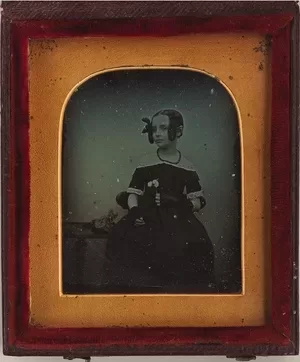

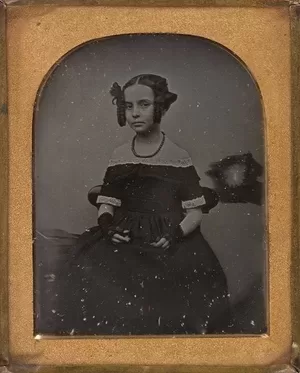

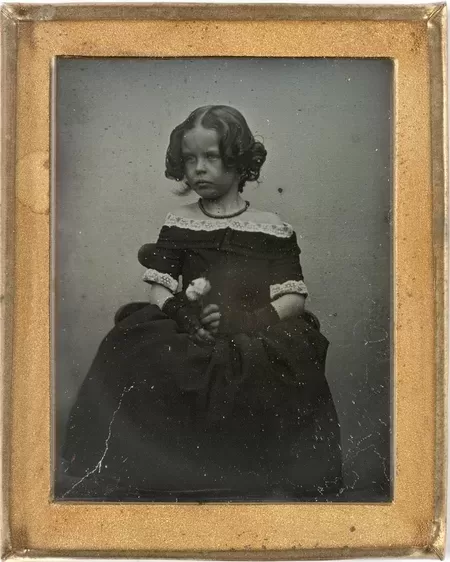

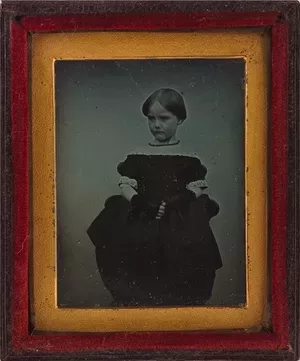

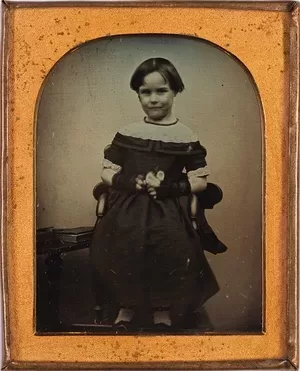

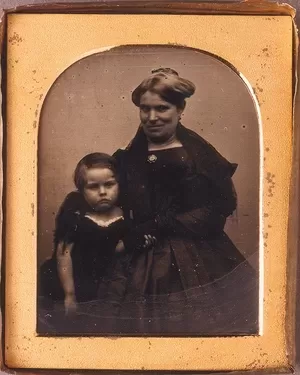

The Lawson family by George Baron Goodman, 1845, from the collections of the Mitchell Library, State Library of New South Wales.
These petite portraits were crafted to snugly fit in the upturned palm of an adult, and are some of the oldest surviving photographic artifacts from Australia. The Lawson family portraits held by the Mitchell Library, State Library of NSW are historically significant photographs of an important family made by the first professional photographer in Australia.
Veteran Hall was built by explorer William Lawson, famous for being the first to cross the Blue Mountains with Messrs Blaxland and Wentworth. At the time of Mr Goodman’s visit to Veteran Hall, William Lawson was one of the elite squattocracy colonists and a member of the New South Wales Legislative Council as a representative of the Aristocratic party. William Lawson lived there until his death in 1850.
In the 1880s most of the Veteran Hall property was submerged in what is now Prospect reservoir. The foundations of Veteran Hall are still visible just off William Lawson Drive, Prospect.
George Goodman personal life
The Jewish entrepreneur George Barron Goodman (10 April 1815 – ) is also known as George B Goodman or even G.B. Goodman, and sometimes erroneously written as George Baron Goodman. He had Anglicised his name from Gershon Ben Avrahim.
Mr. Goodman made a few portraits at his synagogue wedding on January 4, 1843, to teenaged Sarah Polack, who he met during their shared voyage aboard the Eden from England. The nuptials took place at Charlotte Place, Sydney, the residence of Sarah’s father, Abraham Polack, a well-known Sydney emancipist and auctioneer.
Goodman made a small fortune from his photography business, even during the economic depression of the 1840s. He sold his photographic business to his brother-in-law, Isaac Polack, in 1847. In November 1848 Goodman appeared in Eden (Twofold Bay) as an auctioneer and store-owner.
Abraham Polack had objected to Mr. Goodman right from the start. Polack objected to the age difference between his daughter, aged 17 during the voyage on the Eden – possibly 18 by the time of their marriage, and her suitor, George B Goodman, then aged 28.
A violent assault on George Goodman by his father-in-law on Monday 4 March 1850, was reported in Bell’s Life in Sydney and Sporting Reviewer, in the column POLICE OFFICE SKETCHES.
A VERY NICE MAN FOR A FATHER-IN-LAW.—On Wednesday [6 March 1850], Mr. Abraham Polack, the well known auctioneer, was brought before the Court at the instance of Mr. Goodman, the equally well known Daugorreotyper, who charged him with a violent assault, committed on his person on Monday evening, in Pitt-street, when the defendant went the entire animal in doing the dreadful and serious. Putting noses out of joint was not a sufficient display of skill to satisfy Mr. P.’s artistical manoeuvres at single stick, as it appeared he had smashed his son-in-law’s nasal organ in twain, and divided his lip so as effectually to prevent his ever in future having too much of it. The cause of action was obscure. All that could be collected was that Polack met Goodman, who at the time was leading his child by the hand, and that defendant enquired where he was going to take it. Goodman replied that he was proceeding homewards, and Polack then attempted to take it away. A scuffle ensued, and Polack struck Goodman with his stick, breaking the cartilage of the nose (a serious injury as every one knows), and severing the lip. The defendant then, auctioneer-like, knocked Goodman down, and took the child away. Some slight mention was made of Goodman’s being about to proceed to England by the “St. George,” and the whole of the evidence before the Court is before the reader. At its conclusion, the attornies engaged, Messrs. Johnson and Brenan, asked for half an hour to arrange out of Court. This and two additional hours were subsequently granted, and it then was announced that all had been squared excepting complainant’s nose. The whole affair was a tale of mystery. The only things plain were the nosological appearances, and, that great an artist as Goodman was in taking likenesses by the “Sun,” more striking wood-cut impressions were produced by the stick of the “Father.” They were regular stunners, and no mistake. This considered, it became no wonder that the complainant wishing still to be deemed a Good man at his art, frightened at the stick-work of his father, resolved to cut his timber for England.
George Barron Goodman, Australia’s first professional photographer, left Australia for the last time soon after.
George Baron Goodman’s legacy
Goodman, who arrived in 1842, played a pivotal role in popularizing the art form by taking thousands of daguerreotypes during his eight years in the Australian colonies. This marked the beginning of a new era in which individuals could have their likenesses preserved through the innovative daguerreotype process.
His work included portraits and various scenes, contributing significantly to the documentation of early Australian life. As few as one per cent of the cased photographs from these first few decades of colonial Australian photography survive in public or private collections.
Further reading
Related stories:
The First Photograph Taken In Australia Was By Captain Lucas
The oldest surviving Daguerreotype in Australia, 1845
Guide to Collecting Vintage Film Cameras
Glossary of photography terms for auction & collectors – with examples
FEATURE: Collecting Old & Vintage Photographs
Life Magazine’s Innovative Photography at MFA Boston
NASA’s Famous Blue Marble Photo Is 50 Years Old
Man Ray’s love-hate relationship with Hollywood
Fake Photo: Manipulated photography before Photoshop
Faked photos for Soviet propaganda
The beginning of photography: heliographs and daguerreotypes





